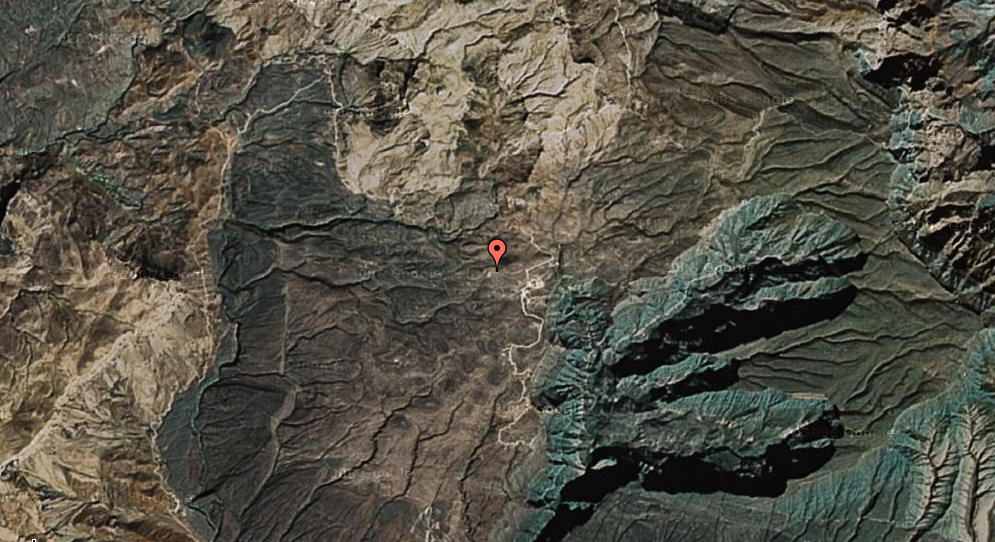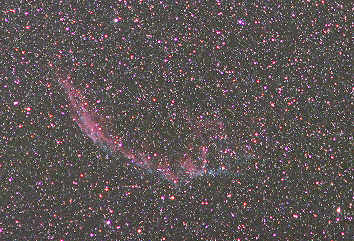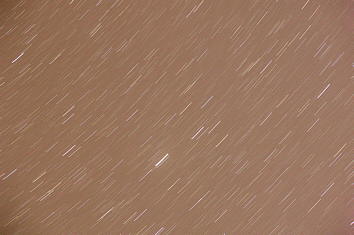
Colour of the
Night Sky
I was out in the mountain boonies on the night of 25th to 26th May 2006 and happened to be taking pictures of the sky continuously as dawn began to break; and I would like to share with you how the colour of the sky changes as the sky brightens up. This was at a dark site, on the lower slopes of Jabal Shams, Oman, elevation 1940m amsl and quite remote from any significant townships. Here is a satellite view from Google Maps. To explore the area further just click on the image below and a new window should open:
Below are small crops from a series of 5-minute exposures, taken sequentially from about 4am onwards (f4 at ISO 800) using Custom White Balance set for bright sunlight, i.e. as our daytime vision would perceive the colours. The last frame shown closed off at 4:37am i.e. almost an hour before Sunrise at 5:26am. Five minutes per frame is a a very long exposure, and even for the final frame the sky was still quite dark. Notice that the sky goes blue only with the Sun peeping up and the "true" colour of the night sky is closer to dark fudge/chocolate/toffee. If we expose longer, or shoot at a higher ISO then it simply becomes a lighter shade of toffee. The night sky at a dark site never shows up as blue unless some sunlight comes in, e.g. by being reflected off the Moon. There was very little light pollution at this site. On the Unihedron Sky Quality Meter, that late at night, the skyfog measured at Mag 21.6/sq. arc-second. Instructions on how to measure your own skyfog using a standard digital camera or DSLR are given here. So, observe below the faint Network Nebula in Cygnus as it becomes overwhelmed by the blue sky colour of dawn:

Here is the first frame of the above series brightened up to illustrate that chocolaty colour of the night sky better:

and here is one with full exposure to mid-histogram, taken with an unmodified Canon 1Ds on the ground, Daylight White Balance, ISO 800, 8mins at f2.8:

Below is a stack of 29x5min Canon 20D uncropped frames, processed , not aiming at colour accuracy, but simply to yield a pretty picture:
North is to the left. The nebulae are, top down, the Veil, Cirrus and Network. I was hoping for some more wispy stuff towards the right (south) but that seems to be too faint to show up. Click on the image above to see this complex in full glory, cropped and enlarged, also technical data and equipment used.
For other stuff visit Samir's Home
To drop me an e-mail just
click on:
samirkharusi